2,6-Diethylaniline
Synonym(s):2-Amino-1,3-diethylbenzene
- CAS NO.:579-66-8
- Empirical Formula: C10H15N
- Molecular Weight: 149.23
- MDL number: MFCD00007753
- EINECS: 209-445-7
- SAFETY DATA SHEET (SDS)
- Update Date: 2025-01-27 09:38:02
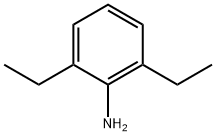
What is 2,6-Diethylaniline?
Chemical properties
Clear liquid
The Uses of 2,6-Diethylaniline
2,6-Diethylaniline is used as a reagent in the synthesis of herbicides, for instance Butachlor (B689925); a pre-emergent chloroacetanalide herbicide commonly used for weed control in rice as well as cotton, maize, wheat and other crops.
The Uses of 2,6-Diethylaniline
2,6-Diethylaniline is an intermediate for the production of alachlor, butachlor, metolachlor-herbicides, tiafentiurone-insecticide, carbodiimide and RIM-PUR. Product Data Sheet
Production Methods
2,6-Diethylaniline is obtained in high yield when aniline is heated with ethylene at 200-300°C under high pressure in the presence of aluminum anilide (Northcott 1978).
General Description
The 2,6-diethylaniline complexes with iodine, as a sigma-acceptor, were studied spectrophotometrically in chloroform, dichloromethane and carbontetrachloride solutions. It is an intermediate for the production of alachlor, butachlor, metolachlor-herbicides, tiafentiurone-insecticide, carbodiimide and RIM-PUR.
Industrial uses
2,6-Diethylaniline is used in the synthesis of herbicides such as Nevirex G and butachlor (Vertesi and Miklos 1982; Lee et al 1982).
Metabolic pathway
Incubation of 2,6-diethylaniline (DEA) with NADPH- fortified rat liver microsomal enzymes produces 4- amino-3,5-diethylphenol (ADEP) as the major oxidation product. ADEP is shown to undergo further oxidation to 3,5-diethylbenzoquinone-4-imine (DEBQI), which is isolated as a minor metabolite during DEA oxidation.
Metabolism
Incubation of 2,6-diethylaniline with NADPH-fortified microsomes produced 4-amino-3,5-diethylphenol (ADEP) as the major oxidation product (Feng and Wratten 1987). ADEP underwent further oxidation to 3,5-diethyl-benzoquinone-4-imine which is isolated as a minor metabolite during 2,6-diethylaniline metabolism. 2,6-Diethylaniline is produced under aerobic soil conditions as a minor metabolite of the herbicide butachlor (Lee et al 1982). 2,6-Diethylaniline is degraded by the soil microorganism Chaetomium globosum to 2,6-diethylacetanilide and 2,6-diethyl-p-benzoquinone (Lee and Ryu 1982). 2,6-Diethylaniline was also very persistent towards biodegradation in pond water with and without sewage sludge inoculation (Lyons et al 1985).
Properties of 2,6-Diethylaniline
| Melting point: | 3-4 °C |
| Boiling point: | 243 °C (lit.) |
| Density | 0.906 g/mL at 25 °C (lit.) |
| vapor pressure | 0.02 mm Hg ( 20 °C) |
| refractive index | n |
| Flash point: | 254 °F |
| storage temp. | Keep in dark place,Inert atmosphere,Room temperature |
| solubility | Chloroform (Slightly), Methanol (Slightly) |
| form | Liquid |
| pka | 4.13±0.10(Predicted) |
| color | Clear yellow to reddish-brown |
| Water Solubility | 0.67g/L(26.7 ºC) |
| Sensitive | Air Sensitive |
| BRN | 1423626 |
| Stability: | Air Sensitive |
| CAS DataBase Reference | 579-66-8(CAS DataBase Reference) |
| NIST Chemistry Reference | Benzenamine, 2,6-diethyl-(579-66-8) |
| EPA Substance Registry System | 2,6-Diethylaniline (579-66-8) |
Safety information for 2,6-Diethylaniline
| Signal word | Warning |
| Pictogram(s) |
 Exclamation Mark Irritant GHS07  Health Hazard GHS08 |
| GHS Hazard Statements |
H302:Acute toxicity,oral H315:Skin corrosion/irritation H319:Serious eye damage/eye irritation H341:Germ cell mutagenicity |
| Precautionary Statement Codes |
P201:Obtain special instructions before use. P202:Do not handle until all safety precautions have been read and understood. P264:Wash hands thoroughly after handling. P264:Wash skin thouroughly after handling. P270:Do not eat, drink or smoke when using this product. P280:Wear protective gloves/protective clothing/eye protection/face protection. P308+P313:IF exposed or concerned: Get medical advice/attention. P405:Store locked up. P501:Dispose of contents/container to..… |
Computed Descriptors for 2,6-Diethylaniline
2,6-Diethylaniline manufacturer
New Products
1-Amino-1-cyclohexanecarboxylic acid Cycloleucine 6-Bromo-3-iodo-1-methyl-1H-indazole 3-(2,4-Dimethoxybenzyl)dihydropyrimidine-2,4(1H,3H)-dione 7-Bromo-1H-indazole ELECTROLYTIC IRON POWDER 2-Methyl-2-phenylpropyl acetate 1-Aminocyclobutanecarboxylic acid 1-(2-Ethoxyethyl)-2-(piperidin-4-yl)-1H-benzo[d]imidazole hydrochloride Decanonitrile tert-butyl 4-(1H-benzo[d]iMidazol-2-yl)piperidine-1-carboxylate 4-Ethylbenzylamine Methyl 5-bromo-2-chloro-3-nitrobenzoate N-(5-Amino-2-methylphenyl)acetamide 2-Chloro-3-nitropyridine 5-Bromo-2,3-dimethoxypyridine methyl 6-chloro-2-(chloromethyl)nicotinate 2-methoxy-4-methyl-5-nitro pyridine 2-iodo-5-bromo pyridine 2-amino-4-methyl-5-nitro pyridine 5-Fluoro-2-Oxindole methyl L-alaninate hydrochloride diethyl L-glutamate hydrochloride Ethyl tosylcarbamateRelated products of tetrahydrofuran

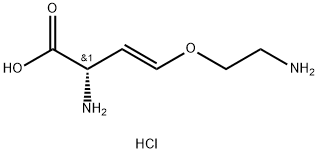
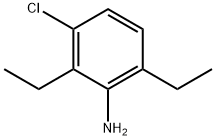
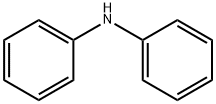
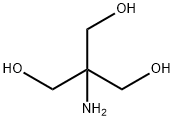



You may like
-
 2,6 Diethyl aniline 98%View Details
2,6 Diethyl aniline 98%View Details -
 579-66-8 98%View Details
579-66-8 98%View Details
579-66-8 -
 2,6-Diethylaniline CAS 579-66-8View Details
2,6-Diethylaniline CAS 579-66-8View Details
579-66-8 -
 2,6-Diethylaniline CAS 579-66-8View Details
2,6-Diethylaniline CAS 579-66-8View Details
579-66-8 -
 2,6-Diethylaniline CAS 579-66-8View Details
2,6-Diethylaniline CAS 579-66-8View Details
579-66-8 -
 Diethyl Disulfide 99% HPLCView Details
Diethyl Disulfide 99% HPLCView Details
110-81-6 -
 6285-05-8. 1-(4-chlorophenyl) propan-1-one 98%View Details
6285-05-8. 1-(4-chlorophenyl) propan-1-one 98%View Details
6285-05-8. -
 171663-13-1 tert-Butyl 3-bromobenzylcarbamate 98%View Details
171663-13-1 tert-Butyl 3-bromobenzylcarbamate 98%View Details
171663-13-1